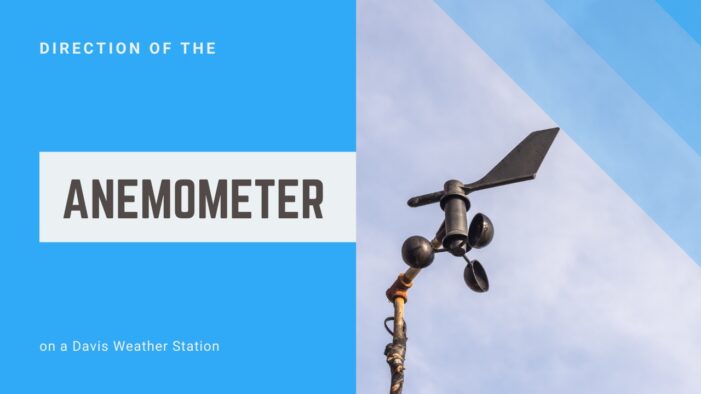Weather monitoring isn’t just for meteorologists anymore. With devices like the Davis Weather Station, everyone from hobbyists to serious scientists can tap into the ebb and flow of our atmospheric conditions.
Today, we’ll zoom in on a critical component of this weather station: the anemometer. But we’re not just talking about what it is – we’re diving into the specifics of its direction and why it matters.
The Anemometer: An Essential Weather Tool
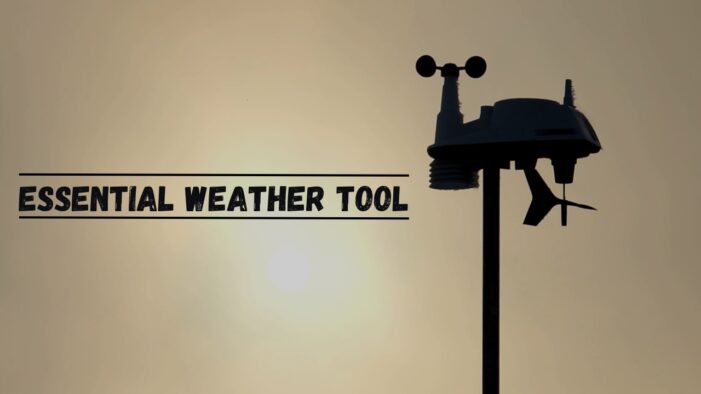
Before we explore its positioning, let’s understand the anemometer itself. It is a device that measures wind speed and direction, a vital component of any weather monitoring apparatus. Its name stems from the Greek word ‘anemos,’ which means wind. Most modern anemometers, like those on Davis Weather Stations, have a digital design and comprise three or four cups mounted on horizontal arms.
When the wind blows, it catches in these cups, causing the anemometer to rotate. The rotation speed is directly proportional to the wind speed – a faster wind results in quicker spinning. Through advanced sensors and algorithms, the Davis Weather Station captures this rotation speed and calculates the wind speed.
The Positioning: Why Direction Matters

Why does the direction of the anemometer on a Davis Weather Station matter? To put it simply: accuracy. The location and positioning affect how precisely it can measure wind speed and direction. When it comes to the anemometer’s direction, there are two primary considerations:
1. The North-South Axis
The Davis Weather Station is designed with the anemometer oriented along the north-south axis. This ensures that the wind vane, a part of the machine that detects wind direction, is correctly aligned with the cardinal directions. As the vane swings with the wind, the anemometer can accurately determine the wind direction, whether it’s from the north, south, east, or west.
2. No Obstructions
The anemometer must have a clear, unobstructed path to the wind. Any nearby obstructions, such as buildings, trees, or other objects, can affect the wind’s flow, leading to inaccurate readings. The anemometer should ideally be mounted high, with no obstructions within a radius of at least four times the height of the nearest obstacle.
Digging Deeper: Aligning Your Anemometer
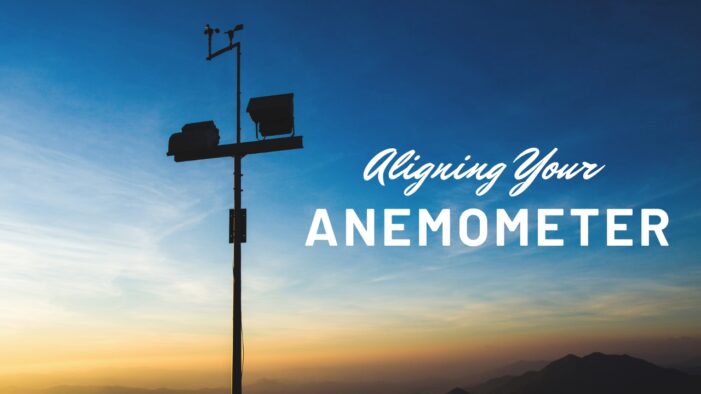
Let’s delve into the specifics of how to align your Davis Weather Station anemometer. It’s a task that demands some accuracy, but don’t worry – it’s doable, and the rewards in terms of data precision are substantial.
1. Find True North
Use a compass to identify the true north. Be aware that the magnetic north shown by most compasses isn’t the same as the true north, so you might need to adjust for the local magnetic declination. Magnetic declination is the difference in degrees between magnetic north and true north, and this information is generally available online for your specific location.
2. Align It
Once you’ve found true north, align the arm of the anemometer marked as “N” in the same direction. This alignment ensures that your anemometer can accurately measure the wind direction.
3. Secure It
Tighten the screws or use other securing methods provided by your Davis Weather Station to fix the anemometer in place. Confirm the alignment again after securing it, as it might have moved during the process.
Considerations for Ideal Placement

While aligning the anemometer is critical, it’s equally important to consider its placement. Here are a few guidelines:
- Height: The World Meteorological Organization (WMO) suggests that anemometers be placed at a standard height of 10 meters above the ground. However, in residential settings, this isn’t always feasible. The key is to place the anemometer as high as possible while maintaining safety and accessibility for maintenance.
- Obstruction Free: Ensure there are no obstructions nearby. Buildings, trees, or hills can impact the wind speed and direction, leading to less accurate readings.
- Secure Installation: Given it’s a wind-measuring instrument, the anemometer is likely to be exposed to strong winds. Ensure it’s secured firmly to prevent any damage or displacement.
Advanced Tips for Optimal Anemometer Performance
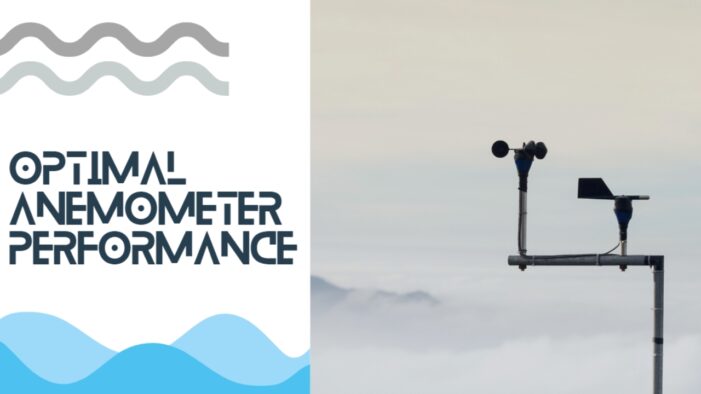
Now that we’ve covered the basics of anemometer placement and alignment let’s explore some advanced tips to optimize your Davis Weather Station’s performance.
Regular Maintenance
Regular maintenance of your anemometer can significantly improve its lifespan and accuracy. Dust, dirt, and other elements can accumulate over time, causing friction that may interfere with its rotation. A quick clean every few months can keep it spinning smoothly and accurately.
Here’s how to do it:
- Power Down: Always turn off your Davis Weather Station before cleaning the anemometer to avoid accidental damage.
- Clean Gently: Use a soft brush or compressed air to remove any dust or debris from the anemometer’s cups and vane. Avoid using water, as this could potentially damage the internal electronics.
- Inspect: While cleaning, check for any signs of wear or damage. If you notice any issues, consider replacing the affected parts to maintain accurate readings.
Calibrating Your Anemometer
Over time, anemometers may drift from their original calibration, leading to less accurate readings. While the Davis Weather Station has self-calibration features, you might want to manually calibrate the anemometer if you notice consistent discrepancies in your wind data.
Calibrating your anemometer involves comparing its readings with a known wind speed, then adjusting the settings accordingly. This process can be complex, so it might be best to consult with a professional or reach out to Davis Instruments for guidance.
Embrace the Data
The true power of your Davis Weather Station isn’t just in gathering weather data – it’s in analyzing and understanding the patterns within that data. Use the weather station’s built-in software to track wind speeds and directions over time. You’ll start to see patterns and trends that can help you predict local weather conditions with surprising accuracy.
Closing Thoughts
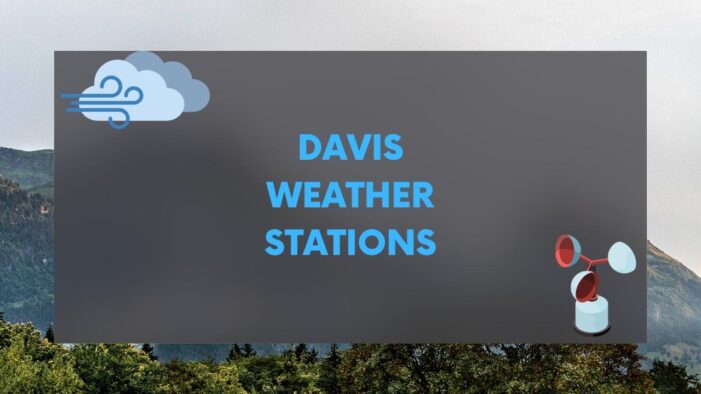
Anemometers play a critical role in weather stations, including the renowned Davis Weather Stations. But, as we’ve learned, it’s not enough to just have an anemometer – it needs to be correctly oriented and placed. From aligning with the north-south axis to ensuring an obstruction-free environment, these factors can profoundly impact the accuracy of your wind data.
By investing some time and effort into the proper positioning of your anemometer, you can ensure you’re getting the most accurate wind information possible. After all, the power of understanding our weather patterns lies in the precision of the data we collect.
Discover the top-rated resources offering accurate forecasts for weather enthusiasts in 2023, including a compilation of 15 exceptional weather radar websites and apps.

